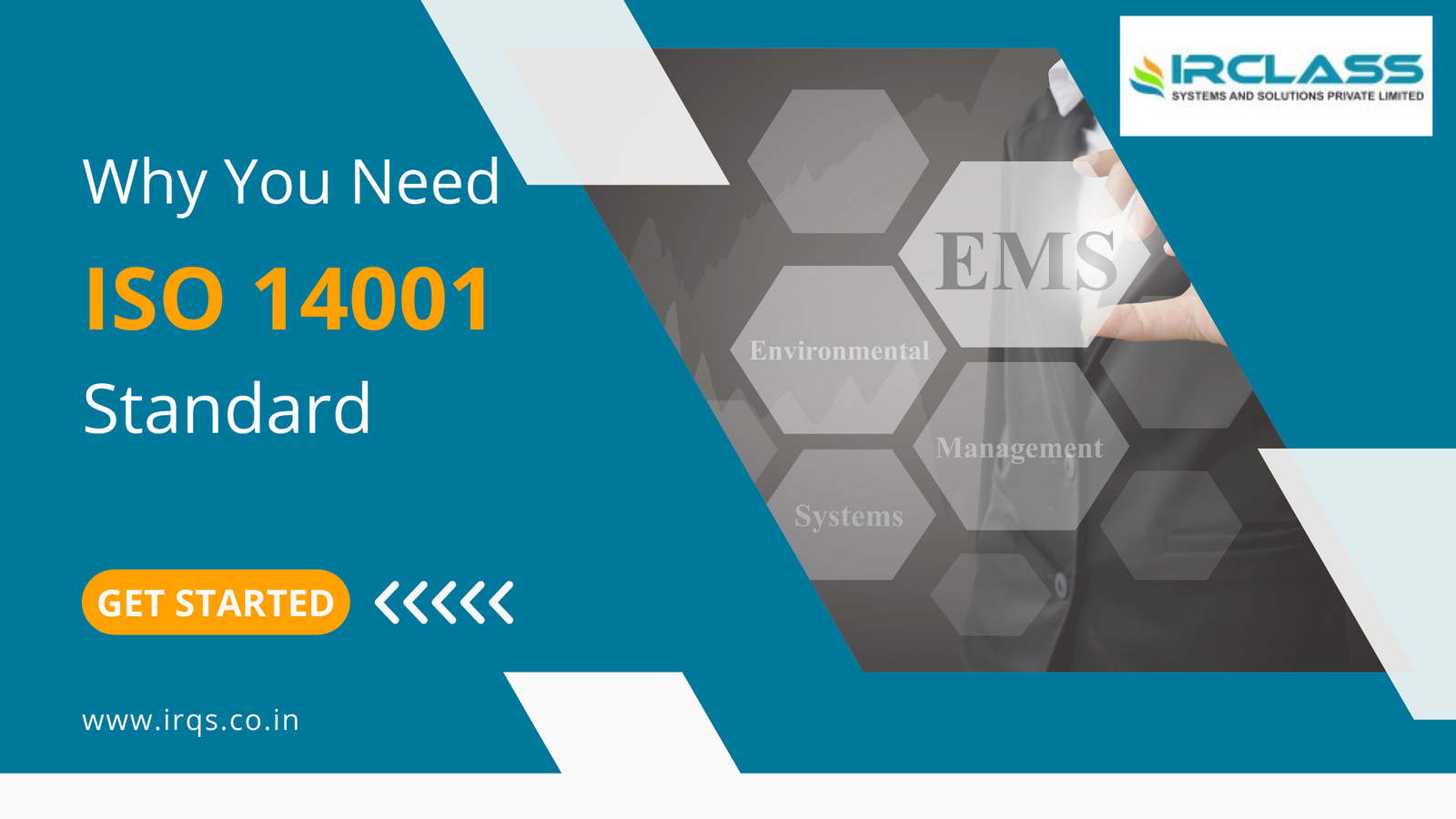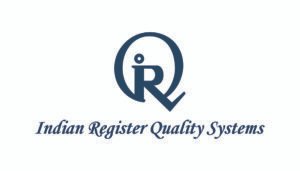Tag: iso 14001 requirements

Why Your Business Needs ISO 14001 Standard Certification
Why Your Business Needs ISO 14001 Standard Certification It is all about helping companies to be more environmentally conscious. It’s sort of a manual which companies can use to be certain that they’re eco-friendly. Consider it an emblem that indicates the company’s commitment to safeguarding the environment. This is how it goes. It starts when a company decides to go more eco-friendly. They consider all activities they perform that could impact on the environment, such as producing waste or using energy. After that, they apply ISO 14001 rules to set an action plan. This helps reduce the impact they have on the environment. Being certified isn’t one time thing. Businesses must continue to work to improve their environmental plans and be examined by professionals to be sure they’re doing the right thing. If they’ve satisfied all specifications, they receive their ISO 14001 certificate. Businesses and customers recognize this and have confidence in the business to be concerned about the earth. ISO 14001 is like an agreement between businesses and the environment. It ensures that everyone does their part in keeping the Earth well. Practical Reasons Why Your Company Should Get the Certification Today, companies don’t just focus on money. Additionally, they have a responsibility toward society and the environment. The certification helps businesses meet this obligation through a focus on the management of environmental issues. These are the main benefits for businesses to look into have ISO 14001 certified: 1. Reducing Negative Impact on the Environment It makes it easier to recognize and control the aspects of your business that may harm environmental quality. Following these guidelines will help you cut back on pollution, eliminate waste, and use resources more efficiently. 2.Saving Costs Improvements in environmental practices often result in costs savings over the long term. ISO 14001 helps you identify possibilities to lower energy use and waste production and improve the efficiency of resource usage, through implementing these methods that, your company can cut operating costs, increase efficiency, and let you into new sustainable markets. 3. Boosting Engagement of Employees The company becomes an inspiration to its new and old employees. They are proud to work in a firm that shows concerns about the environment. It increases their morale. It helps in better collaboration. Also, it encourages creativity among team members. People who are motivated and engaged are more efficient and loyal, which will help your company over the long run. 4. Improved Supplier Relations Nowadays, it is a practice to choose suppliers that boast environmental responsibility. The certification integrates an ethical code in a regulatory framework. There is understanding between stakeholders. There is a genuine focus on sustainability. The collaboration could lead to greener practices in your business’s ecosystem. 5. Improving Risk Management When there is more expertise to manage risks concerning the environment, business operations become more efficient. The certification integrates the method to proactively evaluate the various risk factors. Also, there are provisions to counter them. The response is prompt. This approach reduces the chance of disruptions and improves overall business continuity. 6. Demonstrating the power of Leadership This shows you’re dedicated to making a lasting impact on the environment beyond financial success. Your Leadership can inspire others, such as customers, investors, and the communities surrounding them, to believe in and trust the business. This positions your business as a good corporate company, which helps to sustain development and better the environment. In a nutshell, ISO 14001 certification offers numerous advantages for companies looking to incorporate environmental responsibility into their business practices. The requirements you should consider to receive the Certification This is what you have to complete: Learn the standard: Study and know the ISO 14001 standard. It pertinently defines the criteria to establish a successful Environmental Management System (EMS). The Top Management Commitment: Your top managers need to understand the issues clearly. They must also demonstrate dedication to environmental management, define clear policies, and distribute funds. Determine Environmental Impacts: Determine how your processes impact the natural environment. This can include the production of waste, energy consumption, and emission levels. Legal and other requirements: Identify relevant legal and regulatory requirements related to the environment and ensure compliance. Goals and Targets: Set measurable environmental goals and objectives. They should be precise as well as achievable. They should also be aligned with the policy you have established. Roles and Resources: Allocate necessary resources. Set out roles and responsibilities for creating and maintaining the EMS. Training and Education: The employees must know the EMS and what they are expected to do. Training is necessary and should be provided to raise awareness. Information: Develop necessary documentation, such as an environmental policy, targets, and procedures. Ensure that these documents are appropriately controlled and kept up-to-date. Operational Control: Establish procedures for managing your operations’ environmental impact. This may include regulating garbage disposal, reducing power consumption, and eliminating pollution. Emergency Preparedness: Develop a plan to handle potential emergency situations in the environment. Instruct employees on how to react effectively. Monitoring and Measurement: Always monitor your performance in the environment. This will help you see how you are progressing towards your goals. Internal Audits: Conduct internal audits to ensure the EMS functions as it should. Find areas of improvement. Managerial Review Management: The EMS should be reviewed frequently at the top to check its ongoing suitability, effectiveness, and efficiency. Continuous improvement: Seek ways to increase your efficiency in environmental management and EMS. Implementing ISO 14001 To put ISO 14001 into action: Strategy: Follow these steps: Verify: Monitor and measure your performance in the environment. Perform regular audits to ensure all is running just as it should. Act: Based on audit results and performance statistics, make changes to enhance. Change your procedures and processes whenever necessary. Conclusive Note It’s about obtaining certification and making a genuine commitment to implementing more nature friendly practices. The ongoing commitment to environmental sustainability cannot just benefit the environment but help improve your company’s reputation and efficiency.

Top Reasons to Implement ISO 14001 Standard in Your Organization
Top Reasons to Implement ISO 14001 Standard in Your Organization What exactly is ISO 14001? ISO 14001 is an international standard that is used to create and maintain an environment management program (EMS). Adopting this standard shows the commitment to sustainability actions, leading to significant improvement in environmental performance as well as compliance and efficiency of an organization. Let’s investigate the most compelling reasons for adopting this standard within your company. 1. Cost Savings If you focus on reducing waste, in long run it will lead to maximising resource efficiency. Your company can cut cost by more efficient resource utilization due to reduced energy usage. Low utility costs: Energy-saving strategies can dramatically reduce the electricity or gas bill cost. Lower Costs for Waste Disposal: Cutting down on trash at the source and boosting recycling could reduce expenses associated with waste disposal. Material efficiency: Utilizing material more effectively can cut expenses for procurement. 2. Improving Brand Goodwill Adopting this standard shows that you are committed to sustainable environmental and responsible actions. It can improve your brand image and make it more attractive to potential customers, investors, partners, and consumers concerned about the environment. The certification of your business can make it more appealing to investors. Positive Public Relations: The certification process will help you gain positive press coverage and improve the brand’s reputation. 3. Competitive Advantage This certification will set you above your competitors in an environment where people are becoming more eco-friendly. It could be an exceptional feature that helps you win over customers and build their trust. Differentiation: A certificate differentiates your business from other companies that do not possess the same zeal for the environment. Market positioning: Your brand should be positioned as an authority in the field of sustainability. This can draw customers who are looking for ethical business. Customer retention: Achieving or exceeding customer expectations regarding the environment can result in greater customer satisfaction and more repeat business. 4. Employee Engagement Employees are more likely to feel motivated and engaged in a workplace that will do ethically. By implementing this principle, you can improve morale and create a culture of sustainability in your company. The Sense of Its Purpose: The employees feel proud to be employed by a firm who cares about the planet and can improve employee satisfaction. Engagement: Employee engagement in sustainable initiatives will increase their sense of participation and confidence in the business’s achievement. Workplace culture: An effective environment management program can help create an environment of accountability and sustainability, which can positively affect employees’ overall morale. 5. Risk Management This framework assists in identifying potential dangers to the environment and then implementing steps to reduce these risks. The proactive approach helps minimize the risk of accidents and reduce the chance of expensive accidents. Risk identification: Systematically identifying possible risk factors and environmental hazards could prevent accidents before they happen. Mitigation strategies: Implementing efficient mitigation methods reduces the consequences of identified risks, thereby protecting your company from costly accidents. Emergency preparedness: Being prepared for environmental emergencies can reduce damages and guarantee a quick, efficient reaction. 6. Better Resource Management Monitoring the quality of your resource use can help you identify areas for improvement. This will result in better resource utilization and lower operating costs. 7. Continuous Improvement The standards encourage a culture of continual improvement. Regular reviews and audits will ensure your environmental management system stays current and efficient and enable continuous performance improvement. Monitor Performance: Continuous monitoring of industrial procedures to find areas of improvement. Feedback Loop: A feedback loop will ensure the learnings are utilized to improve processes continuously. Creative Solutions: The focus on continual improvement promotes creativity and the use of fresh methods that are more sustainable. 8. Benefits of Supply Chain Implementing the standard can positively affect the supply chain. Partners and suppliers could adopt similar methods, leading to an environmentally supportable supply chain overall. Collaboration with Suppliers: working closely with suppliers in adopting sustainable methods can improve connections and enhance overall sustainability of the supply chain. 9. Customer Satisfaction Client Trust: The certification demonstrates your commitment to environmental sustainability and building trust with your clients. Meeting expectations: Customers expect businesses to behave responsibly. Certification proves you have met these expectations, increasing customer satisfaction. 10. Global Recognition Market Access: A certificate opens doors for international markets and provides new business potential. Consistency ensures that your environmental management methods remain consistent throughout all areas regardless of geographic differences. 11. Improved Decision Making If you have a well-planned method of environmental management, your company can make more educated decisions that consider the environmental Impact. This could lead to improved overall decision-making processes. Data-driven decisions: The ability to access reliable environmental data aids in making well-informed decisions. 12. Reduction of Environmental Footprint Emission reductions: Implementing steps to cut greenhouse gas emissions could reduce industrial carbon footprint. Water Conservation: Utilizing water resources efficiently helps reduce consumption while minimizing adverse environmental effects. Waste minimization: Reduced waste production and better recycling efforts reduce your environmental footprint. 13. Stakeholder Confidence Implementing this standard will increase your company’s confidence in its dedication to sustainability. Transparency: The certification offers the transparency and accountability you need in your environmental practices. Trust: Affirming a determination to manage the environment builds trust among those involved. Reputation: A positive reputation for sustainability may draw customers and investors committed to environmental sustainability. 14. The ability to access New Markets Specific markets and customers need suppliers to possess Environmental Management Certifications. When you get ISO 14001 certification, you can access these market opportunities and marketplaces. Market Specifications: Compliance with standards for certification helps your business participate in agreements and business opportunities for emerging markets. Competitive edge: Certification can provide an edge in bidding for contracts with a focus on the environment. Potential access to new markets could drive expansion and growth. 15. Improved Community Relations A reputation as a green and environmental-friendly organization could improve your relationships with the local community. This could lead to a more positive image and greater trust from

ISO 14001 Certification: A Guide to Environmental Management Systems
ISO 14001 Certification: A Guide to Environmental Management Systems ISO 14001 is an internationally-recognized certification program. It defines a global standard with specific requirements for a robust environmental management system or EMS. ISO 14001 delivers a framework that all organizations can follow. It only needs adherence and does not need many resources. In fact, it is part of the management system certification, and the ISO 14000 family of standards on environmental management defines a voluntary standard that all the organizations can certify to. Integrating ISO 140001 and other management standards can assist in accomplishing organizational goals. It is often paired with ISO 9001. The International Organization for Standardization, or ISO, defines the environmental management system in an organization as a vital part of the management system. It is essential to manage environmental aspects and meet the obligations for environmental awareness. Understanding ISO 14001 – Obtain an overview. ISO 14001 is a well-defined set of business standards. It is a comprehensive guide for developing a robust environmental management system. The standards are apt for any type of business. ISO 14001 offers the best assurance of the environmental impacts with a consistent improvement approach. The assurance is convenient to convey to the stakeholders, like the employees and investors, via an ISO audit and certification. The ISO 14001 standards were designed by 70 participating ISO members, with optimal expertise and insight for the development of the global standards. ISO is a national standard body with a global approach. ISO 14001 standards are for the environmental management requirements in the organization. While other management systems, like ISO 9001 are apt for quality management, ISO 45001 for occupational health safety, and many more. Simply put, it facilitates the integration steps of ISO 14001 with an existing ISO management system. What does it cover? ISO 14001 overview of the topics written below, related to an environmental management system or EMS – The revised versions – 14001:2004 versus 14001:2015 The 2015 version of ISO 14001 brought several changes and made it a better choice. The ISO 14001:2015 revision focuses on the process of incorporating a high-level structure. It is effective and uses the mandatory definitions of implementing common standards requirements and clauses. The prime influential aspects of the 2015 revision of the ISO 14001 version include – Benefits of ISO 14001 for an organization ISO 14001 is apt for organizations of various types and sizes. It includes private businesses, non-profit companies, government entities, etc. ISO 14001 facilitates the process of taking steps for all environmental issues in the organization. It is relevant for operations in the organization, including – The ISO 14001:2015 has more than one benefit for organizations as it helps with the following operational aspects – The need to implement ISO 14001 – EMS in the organization 1. Legal compliance Getting the ISO 14001 certification makes the organization appear up to date with legal regulations. Avoid the fines and legal hassles with the best EMS practices and ISO 14001 framework. 2. Enhanced reputation with consumers Undoubtedly, the trend is to go green! Hence, more consumers are ‘going green’! With the rapidly growing environmental concerns impact, one can witness a shift in their purchasing decisions. Getting ISO 14001 certification exhibits an active commitment to managing the environmental impact. 3. Competitive advantage With the ISO 14001 certification, step ahead of the competitors! It is profitable if the organization is bidding for the tender. With more and more businesses acquiring the ISO 14001 certification, it is critical to ensure the best decision for the organization. 4. Reduce waste The global standard reduces the amount of waste produced by organizations. Reduce the unnecessary running of machinery and use the resources optimally with the framework guidelines of ISO 14001. By using renewable energy sources in the organization and implementing energy-saving processes, a company becomes energy efficient. 5. Reduce costs Cost reduction is a critical aspect for all organizations. Naturally the rapid increment in efficiency results in reduced costs of business operations. The cost of waste management also reduces, with a direct and positive impact on the environment. 6. Reduced insurance costs Did you know that considering the ISO 14001 certification can reduce insurance premiums? The globally accepted certification proves the performance of the organization and robust due diligence, managing the possibilities of environmental threats. Ensure zero negligence with reduced insurance costs. In a nutshell – Summing the highlights comprehensively. ISO 14001, in the 2015 version, specifies the need for an environmental management system. It is indispensable for organizations and is critical to enhancing their environmental performance. ISO 14001:2015 is ideal for use by an organization looking for different ways to manage its environmental responsibilities systematically. In fact, it is a crucial part of the environmental pillar of sustainability. Meet the organizational goals and meet the objectives without neglecting the EMS norms. ISO 14001:2015 facilitates an organization to achieve the best outcomes. Find practical and efficient service with IRQS. With IRQS, connect to a team of the best ISO experts and auditors. Get the best service with an efficient approach and obtain accurate reports. Know the correct pieces of information for ISO 14001 and make a wise decision to benefit your organization and the environment.
Search
Useful Links
Recent Posts

5 Easy Steps to ISO Certification in Surat: Boost Your Business Today!

The IRQS Edge: What Sets Our ISO 9001 Training Apart from the Competition



